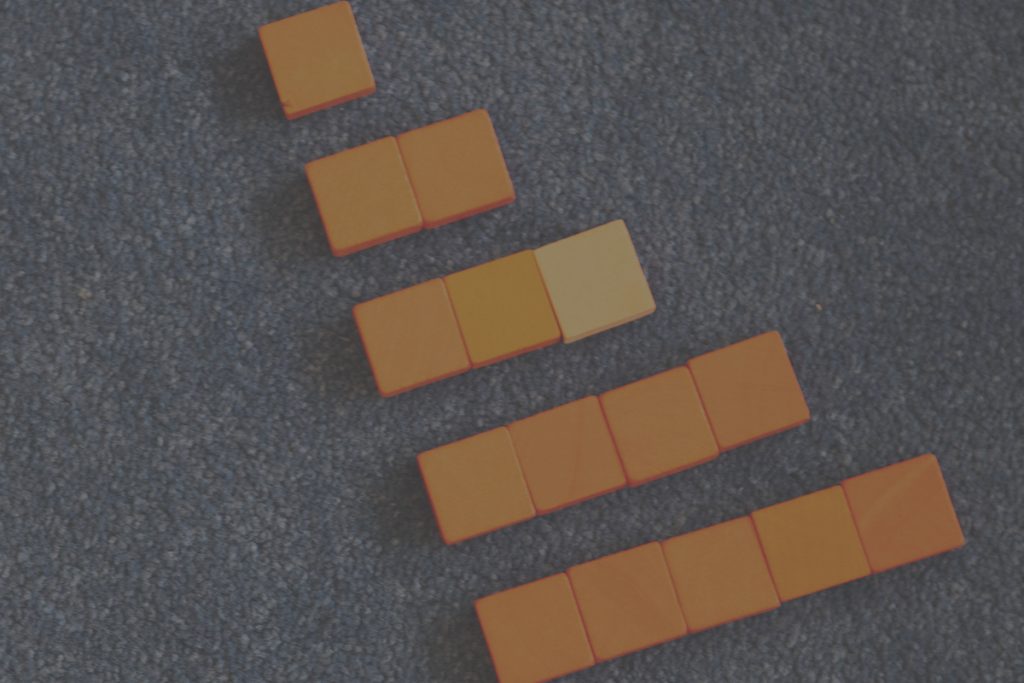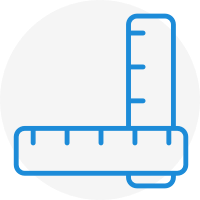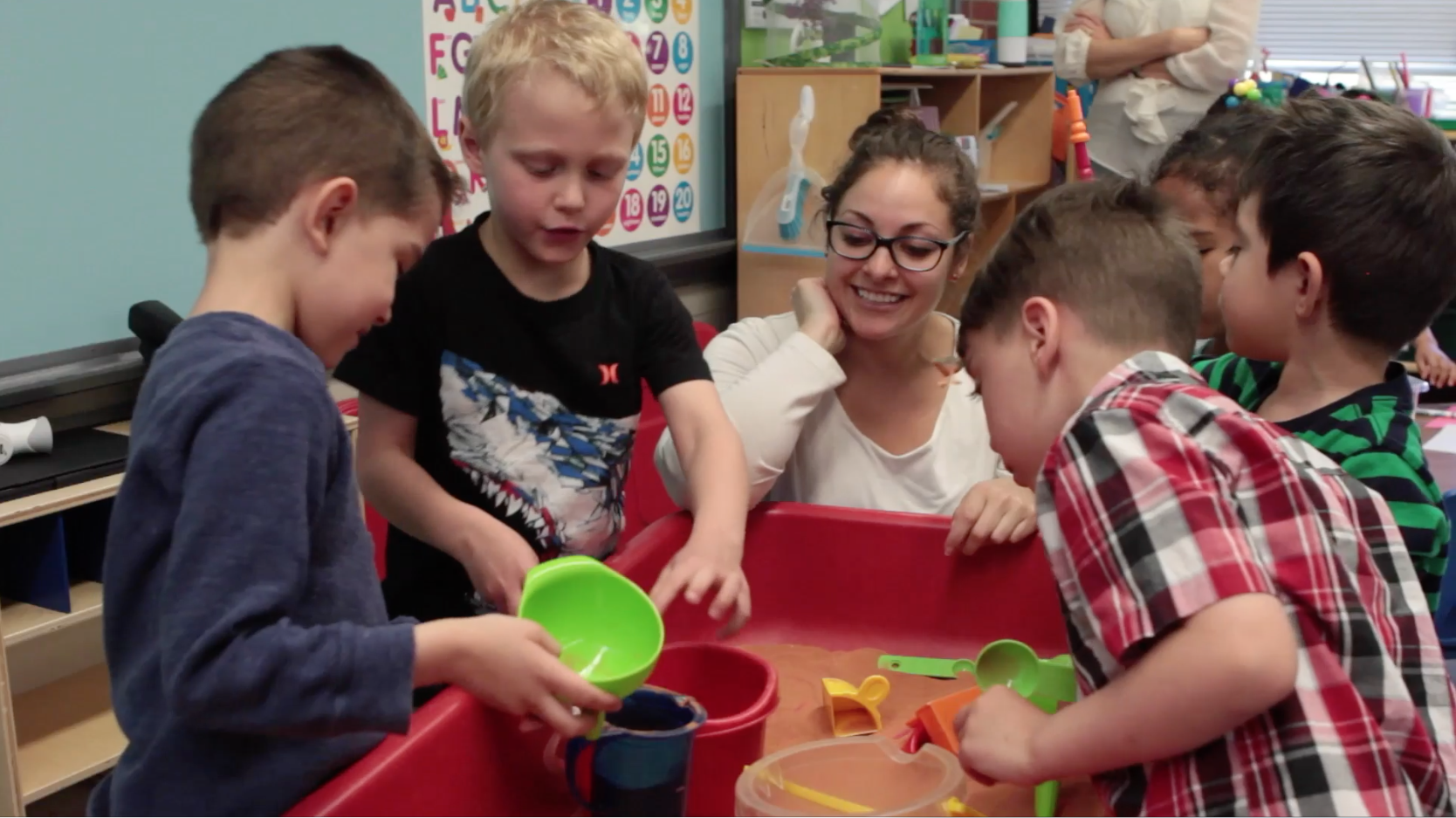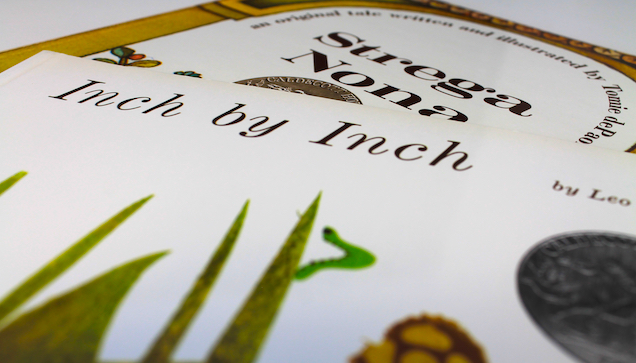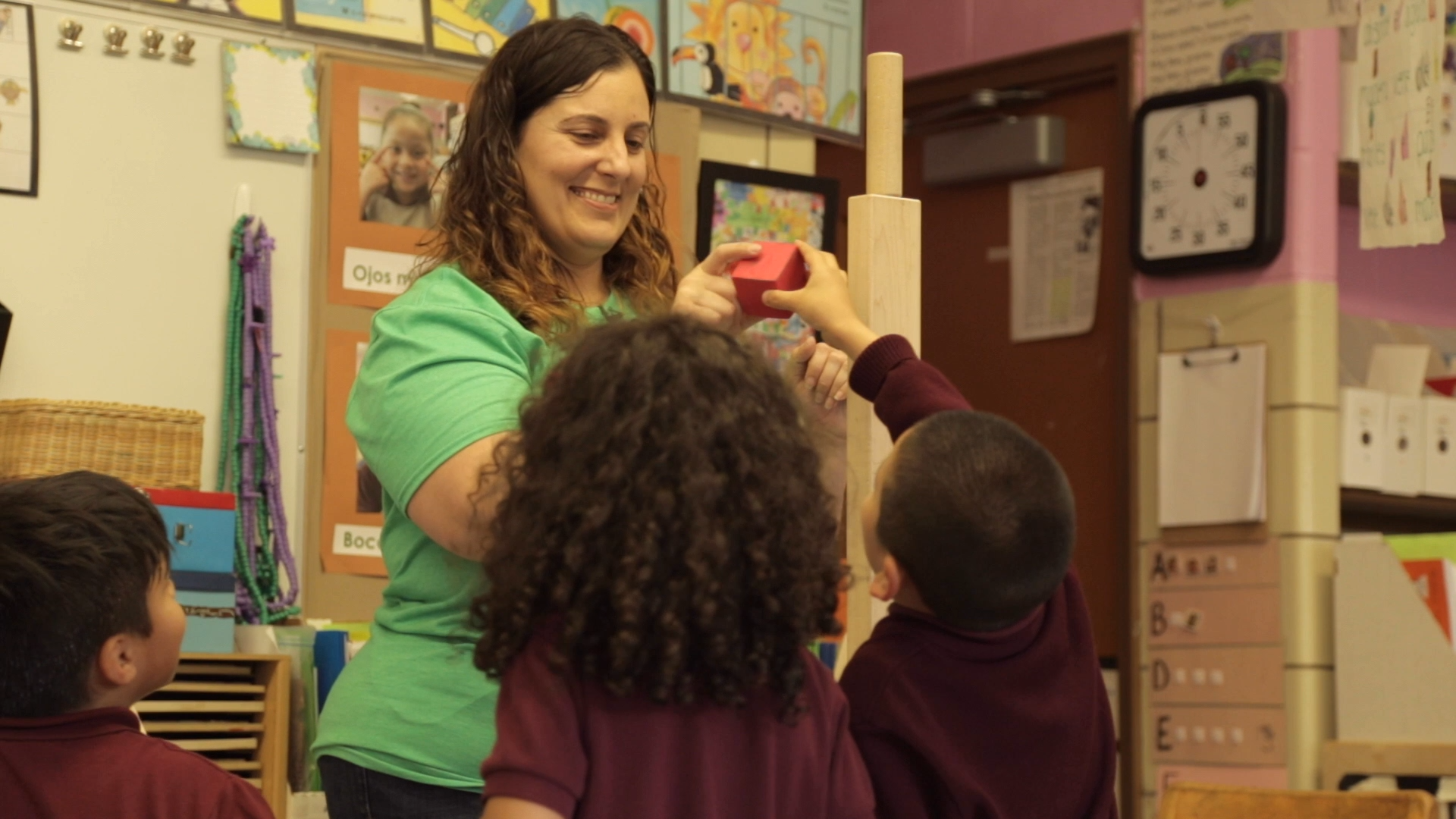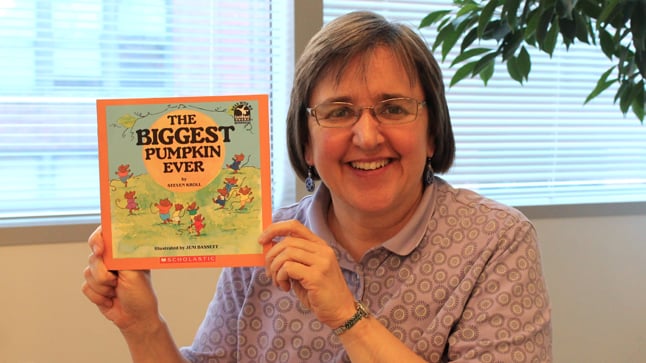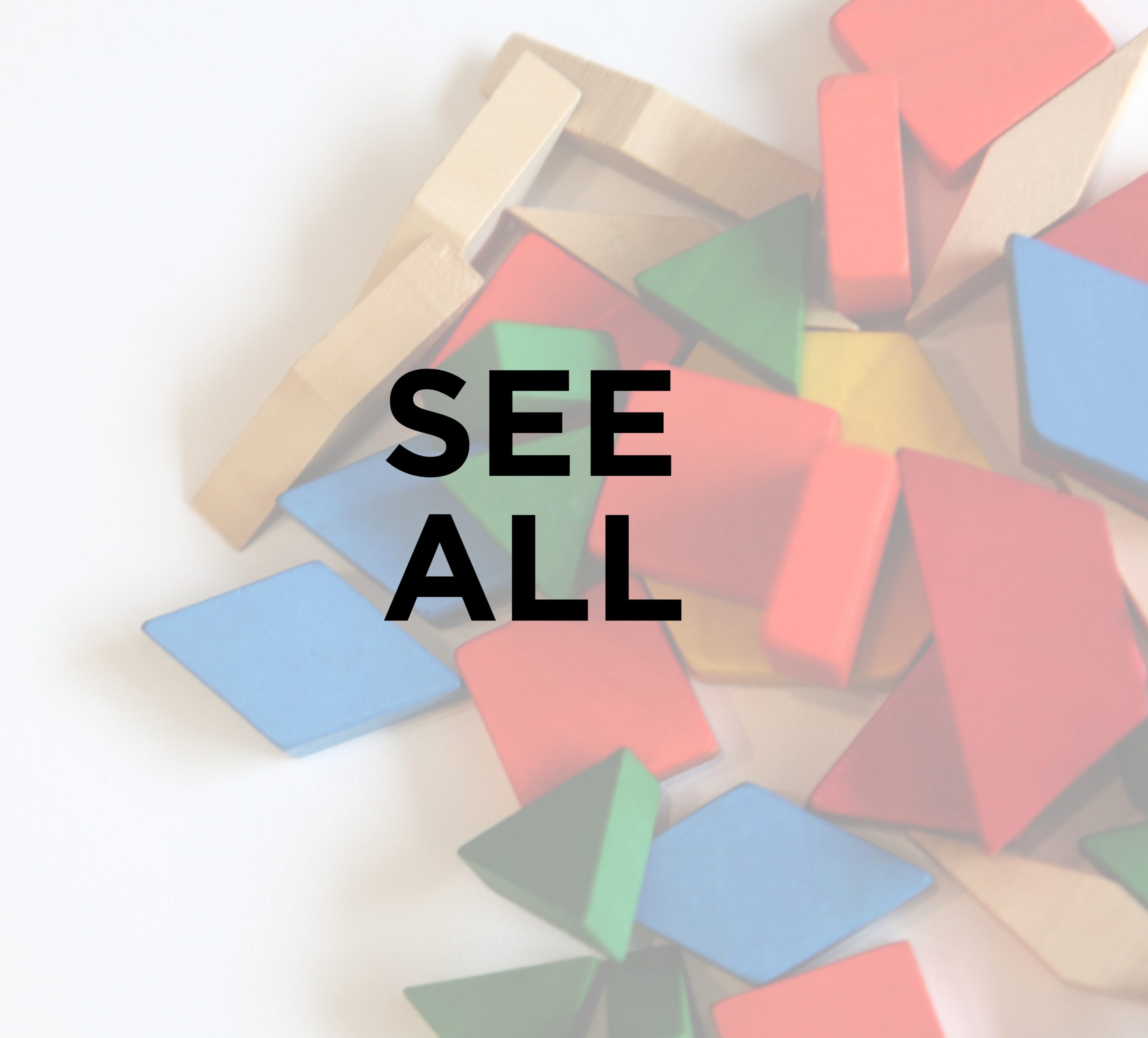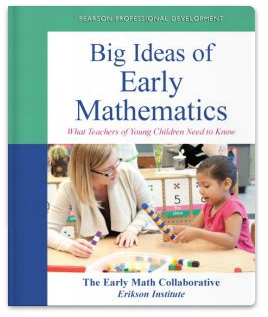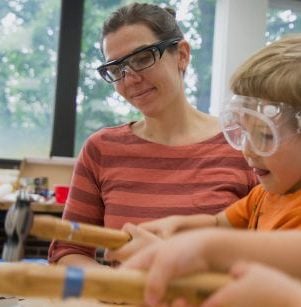Medición
Questions about “What’s the biggest?” get raised again and again in early childhood settings. If we want to know just how much bigger the “biggest” one is, we’ll get out a measuring tool: a ruler, a tape measure, or a measuring cup. Alternatively, we might avoid numbers altogether and settle for a direct comparison, lining the containers up tallest to shortest, or from that which holds the most sand to the one that holds the least. In each of these situations, we are engaging in measurement. Technically speaking, measurement is any process that produces a quantitative description of an attribute, such as length, circumference, weight, temperature, volume, or number. Measurement is an essentially mathematical procedure that we apply in many different contexts.
Derechos de autor: Erikson Institute's Early Math Collaborative. Reimpreso de Big Ideas of Early Mathematics: What Teachers of Young Children Need to Know (2014), Pearson Education.
grandes ideas
● Cuantificar una medida nos ayuda a describir y comparar con mayor precisión.
● Toda medición implica una comparación "justa".
● Se pueden medir muchos atributos diferentes, incluso cuando se mide un solo objeto.
¿Te interesan las sugerencias de libros?
Browse our favorite children’s books that explore Measurement.
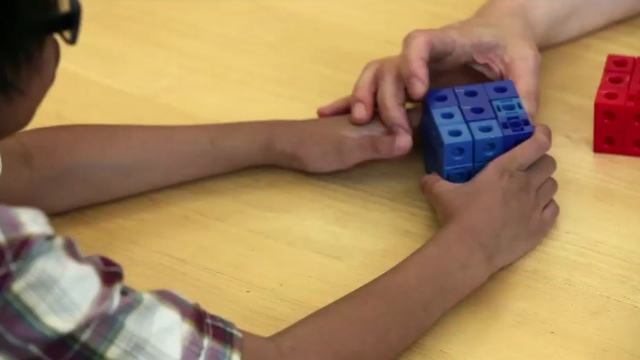
Volumen de un cubo con niño 14
Este niño de segundo grado tiene un uso limitado de la estructura y una comprensión parcial de las unidades cúbicas. Los vídeos de Focus on the Child proceden de entrevistas individuales con niños concretos. Las entrevistas están diseñadas para obtener pruebas del pensamiento matemático de los niños.
